- Home
- Replacement Artwork,logos,etc Available
- The Allwin Arcade
- Trade Stimulators
- The Strange & Unusual
- The Aristocrat Collection
- The Bally Collection
- The Bell-Fruit collection
- The BDR/BMR Collection
- The Bryans Collection
- The Buckley collection
- Caille Brothers Collection
- Working Models
- The Groetchen collection
- The Hawtin's Collection
- The Jamieson's Collection
- The Jennings collection
- The Mills Collection
- The NSM (Bingen) Collection
- The Oliver Whales Collection
- The Pace Collection
- The Parkers Collection
- The Rock-ola collection(slot machines)
- The Ruffler & Walker Collection
- The SEGA Collection
- the Shefras collection
- The TH.Bergmann Collection
- The Tom Boland collection
- The Watling collection
- The Whittaker Bros Collection
- the Wondermatics collection
- The Wulff Collection
- The Juke Box Age
- Coin Operated Cranes & Diggers
- Coin Operated Shooting Games
- Coin Operated Weight Scales
- slot machine coins & tokens for sale
- Amusement Arcades from the Past
- The British Seaside Pleasure Pier
- The Market Place
- Coin Operated Related Seaside Postcards
- See a Selection of the More Complex Machines at Work
- Stuart Dale's Imperator Rebuild
- Stuart Dale's Steam Shovel Project
- The "Allwin" Machine
- Useful Links
- The Rye Heritage Ctr Collection of Working Models
- Williamson's Vintage amusement arcades
- Contact Us
. 

. 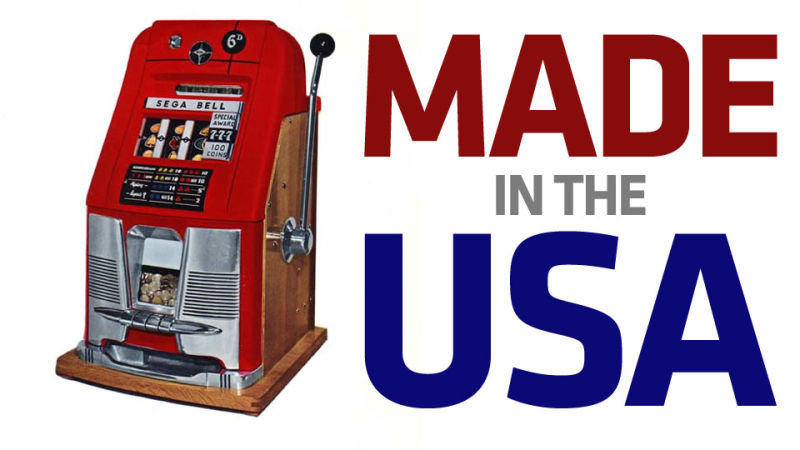
Made in the USA? The machine, well not really but the company most definitely yes. In 1940 three Americans ,Martin Bromley, Irving Bromberg and James Humpert, living in the US run territory of Hawaii sensing the coming of war and the American build up of armed forces ,particularly in the Pacific, formed Standard Games to supply coin operated machines (mostly slot machines) to military bases in the area
Within a year the war arrived (Bromley was actually at Pearl Harbour during the Japanese attack) During the war years the company became quite successful but because of the war was unable to expand.
This changed in 1946 ,now called Service Games, referring to its military connections, they started to supply machines to American and Allied bases across the occupied Pacific region. By 1950 it was clear the main market was in US occupied Japan with its huge number of US military personnel with large amounts of both time and money on there hands.

So in 1951 the company moved everything to Tokyo and was renamed Service Games of Japan. In 1954 the most important person in the early development of SEGA appears on the scene , David Rosen, who was actually in the US forces based in Japan at the time and recognised the potential of coin ops in Japan and formed Rosen Enterprises in 1954 mostly to import coin operated photo booths (the entire population of Japan needed photo ID cards at this time) and later slot machines.
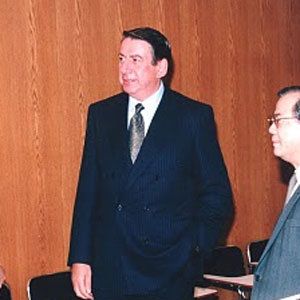
David Rosen
Both companies grew steadily until realising the benefits of joining forces they merged in 1965 to form Service Games Enterprises, the name being a bit of a mouthful was shortened to SEGA at the same time. Although Service Games had already used the new name well before 1965
Rosen became the driving force at SEGA and pushed the company forward, however looking for finance to developed electronic games Rosen sold SEGA to the American Giant Gulf+Western in 1969 but stayed on as CEO and this led to the development of SEGA's first home console unit the SG1000. In 1983 the video gaming market crashed almost bankrupting SEGA. Its US components were sold off to Bally while the Japanese side was sold to Japanese amusement arcade magnet Hayao Nakayama and David Rosen. In 1984 This new version of Sega was bought by Japanese IT company CSK and the resilient Rosen stayed on retiring as chairman in 1996.
Game development

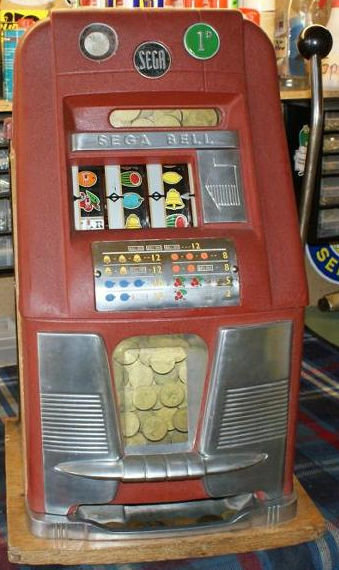
Early Sega Bell Later Model
Service Games bought the rights to distribute Mills Hi-tops in what the contract described as "The Pacific Ocean Area" in 1956 and may have started re branding them as early as 1957 and making their own version in 1958 along with their version of the Mills Vest Pocket machine under the name Mini Sega.
This was a bad deal for the already failing Mills company still reeling from the effects of the Johnson Act. It would seem to be a desperate act of a failing company but it didn't work as it in effect gave away the Far east market at a time when foreign markets were the only option for US slot makers and didn't even protect their rights in that area allowing Sega to make their own machines by saying they were making custom machines for individual customers. Eventually Mills sold much of their spares and tooling to SEGA including one of their three sets of dies ,the best, almost unused, set!
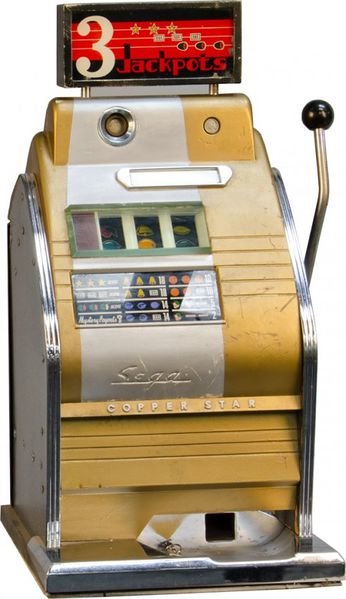
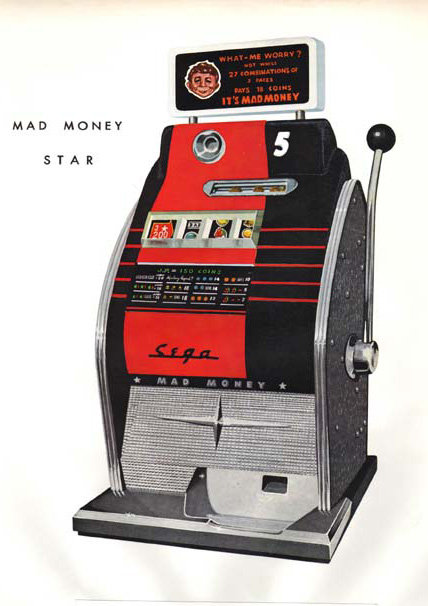
Copper Star Mad Money
The UK was the first SEGA market outside the Pacific area (1960) The company started to produce slots aimed directly at a particular country and produced the "Copper Sega" in 1963 for the UK market and the "Mad Money" for the US market but the Mad Money was never sold to the US due to copyright problems with Mad magazine . Their small Windsor Series was offered to various distributers with the option to use their own art work and special features.The Sega market in the UK faded after 1965 and there are no records of slots arriving in the UK after that date, SEGA didn't really return to the UK until the video era around 1981.
Windsors
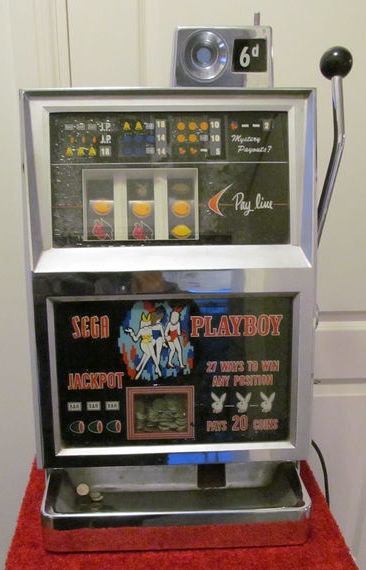
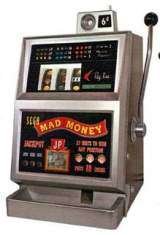
Playboy Mad Money
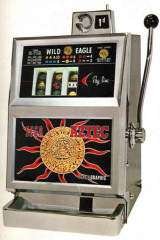
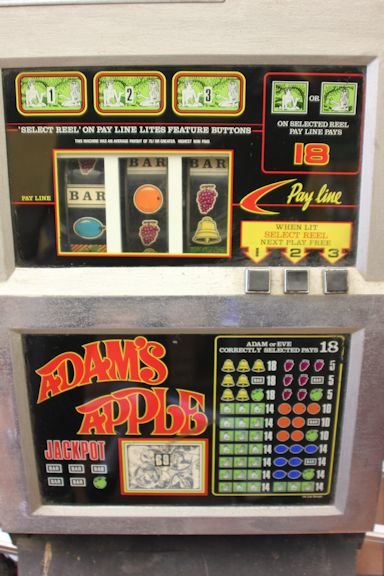
Aztec(with wild symbol) Adams Apple(with special feature)
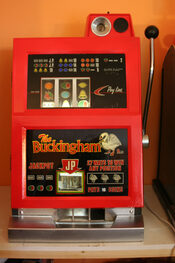
One of the most common Windsors was this Buckingham with visible hand filled jackpot
One arm bandit style machines were actually only a small side of SEGA production after about 1963,when they based their production on large cabinet arcade machines with which they were already getting great success and were cheaper to make in Japan due to low labour costs
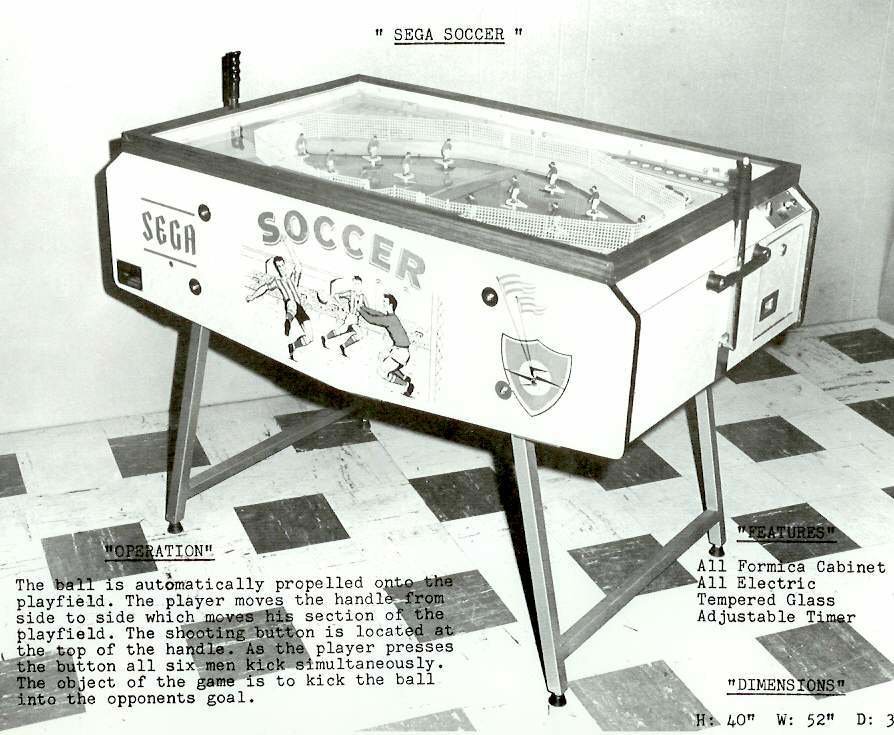
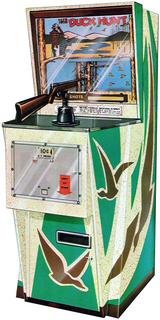 Soccer Duck Hunt 2
Soccer Duck Hunt 2
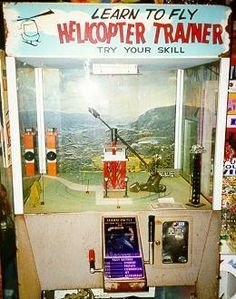
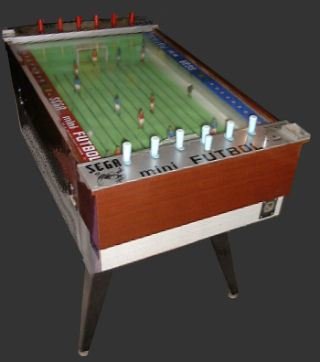
The very successful Helicopter Trainer Multi Futbol (European model)
There are several views on what SEGA's first machine actually was depending on the company name at the time and just how much of the machine was a SEGA.
SOME of the options for SEGA's first game are
First SEGA branded game SEGA Bell (1957)
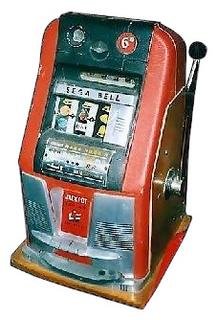
First SEGA 100% built game Punch Bag (1962) although this game is clearly an update of a much earlier Mills punch bag and there is considerable evidence that the game actually came out in 1966
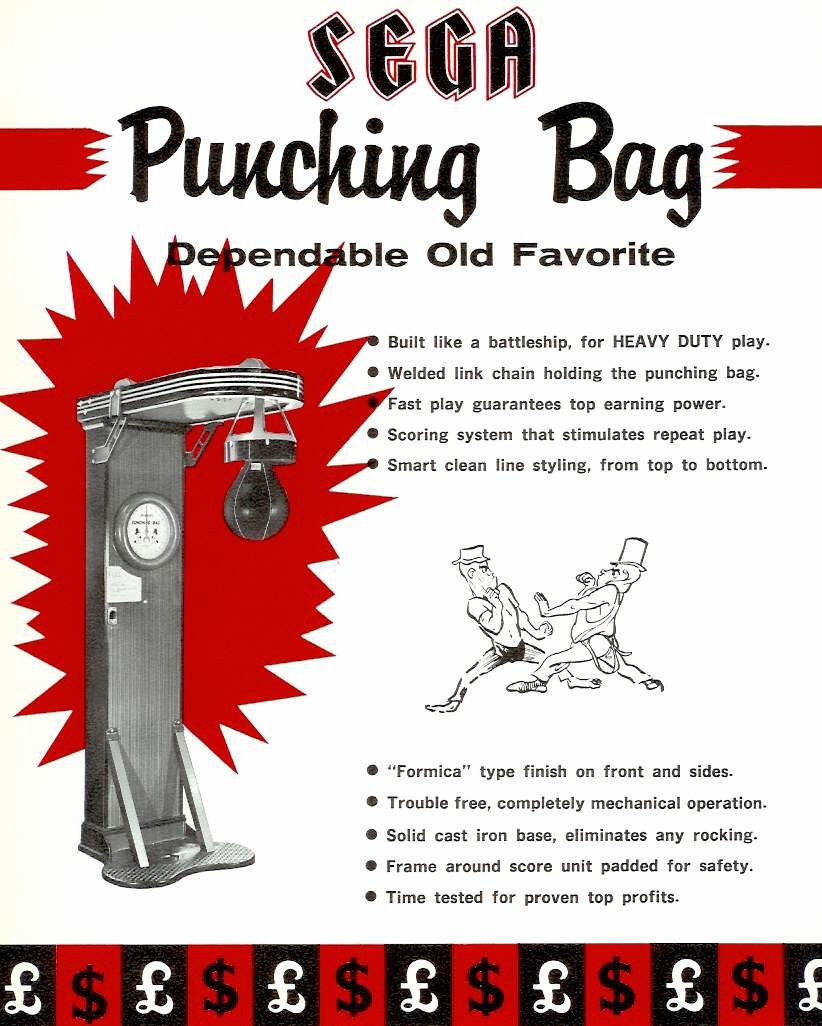
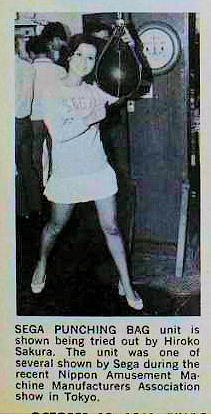
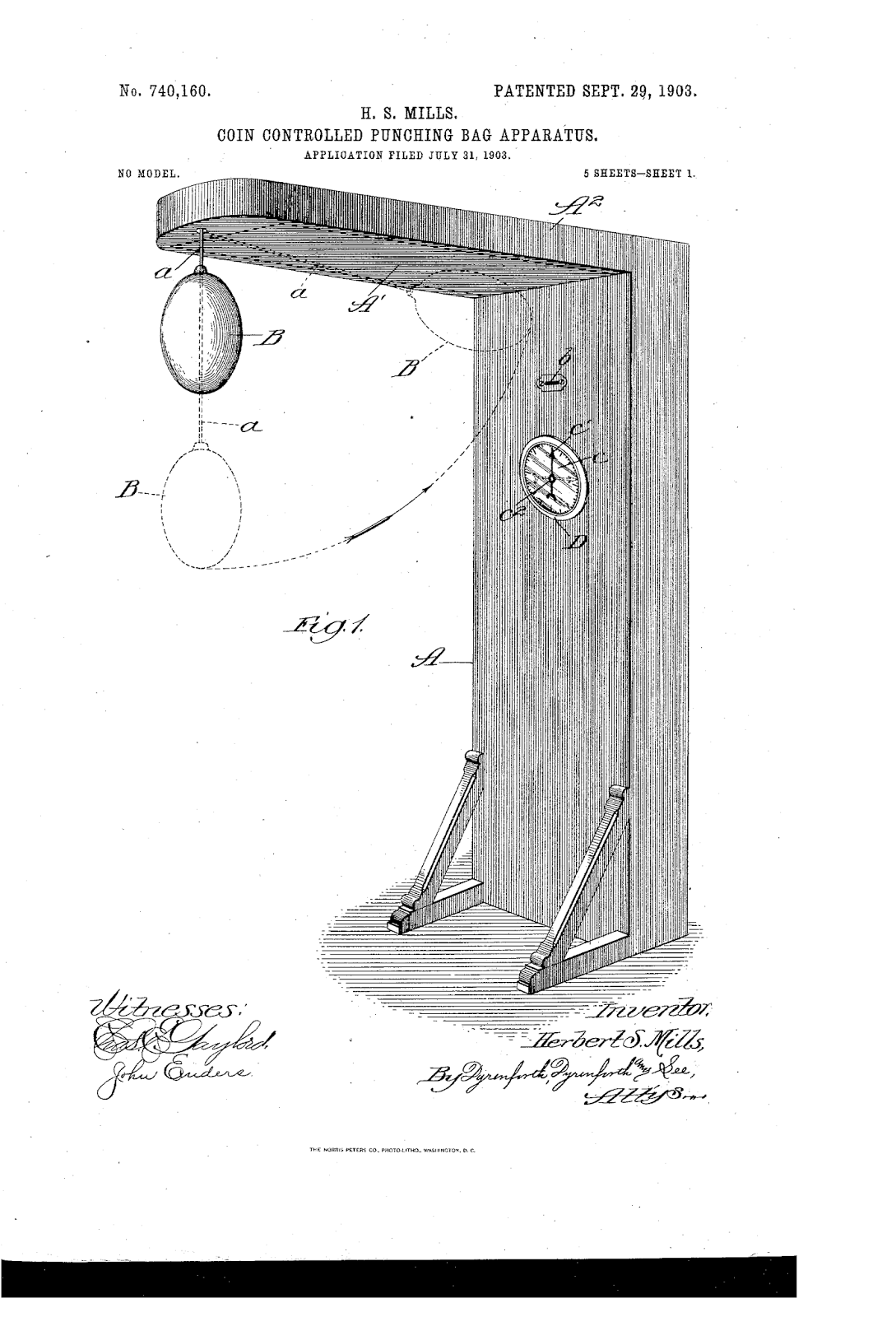
Punching Bag (1962/66) the remarkably similar Mills(1909)
First SEGA arcade game fully SEGA designed and built Periscope (1966)
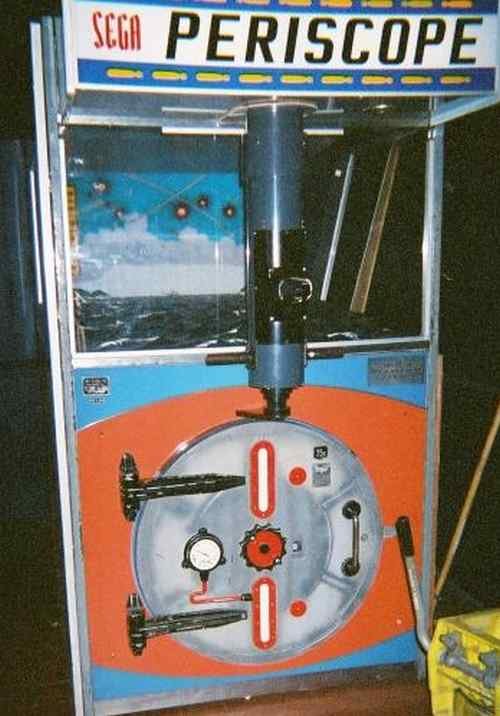
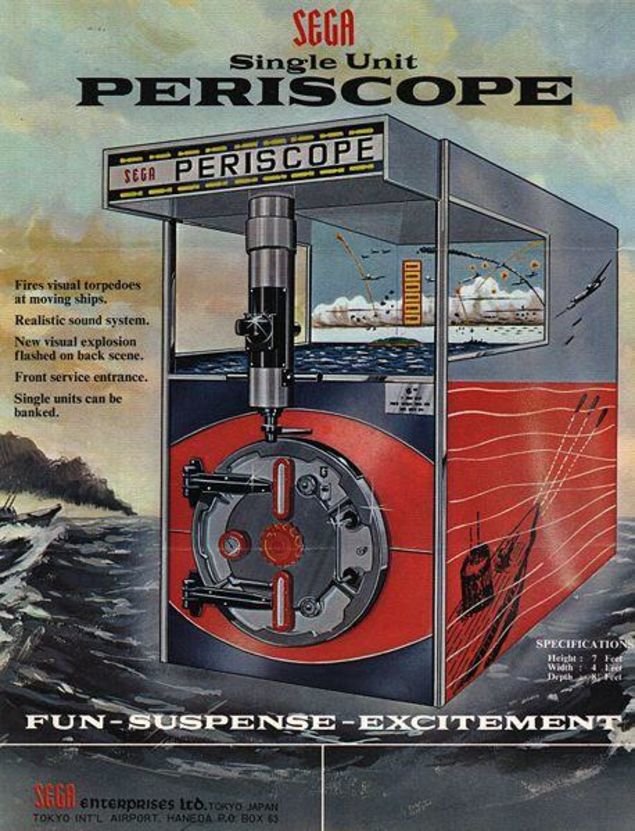
Single Unit Periscope
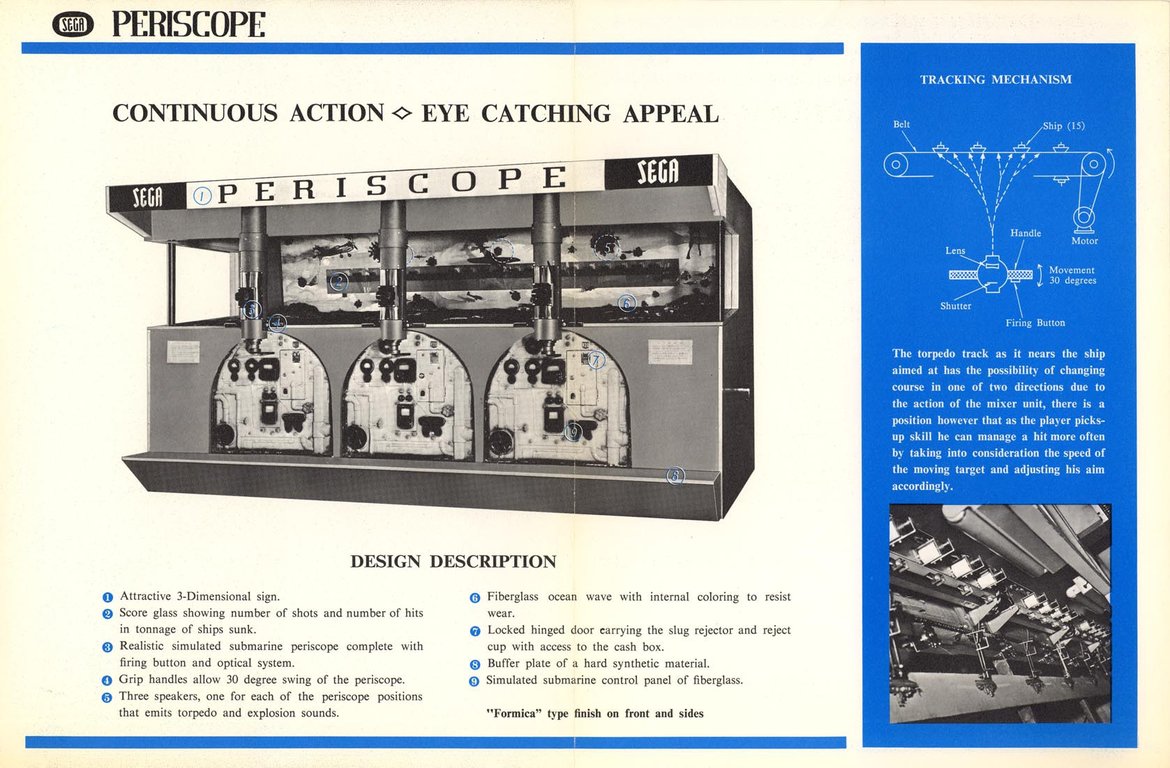 Multi Unit Periscope with design Specs
Multi Unit Periscope with design Specs
periscope was a huge success and set SEGA on their large arcade machine course.Midway Co would become a rival
Their Skill Digger Crane is dated 1965 but is thought to be a copy of another cabinet, the later Skill Digger with the interesting option to "stir" the prizes once for every coin didn't come out till late 1966
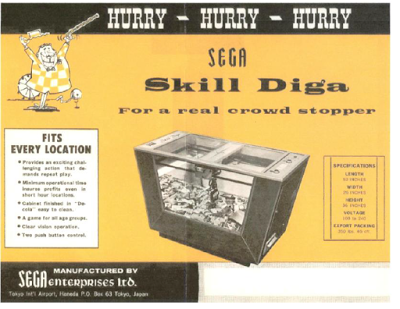
Skill Diga
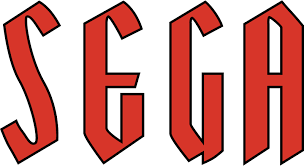
Some more of Sega's machines
Slots

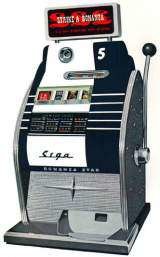
Mad Money Early Bonanza Star
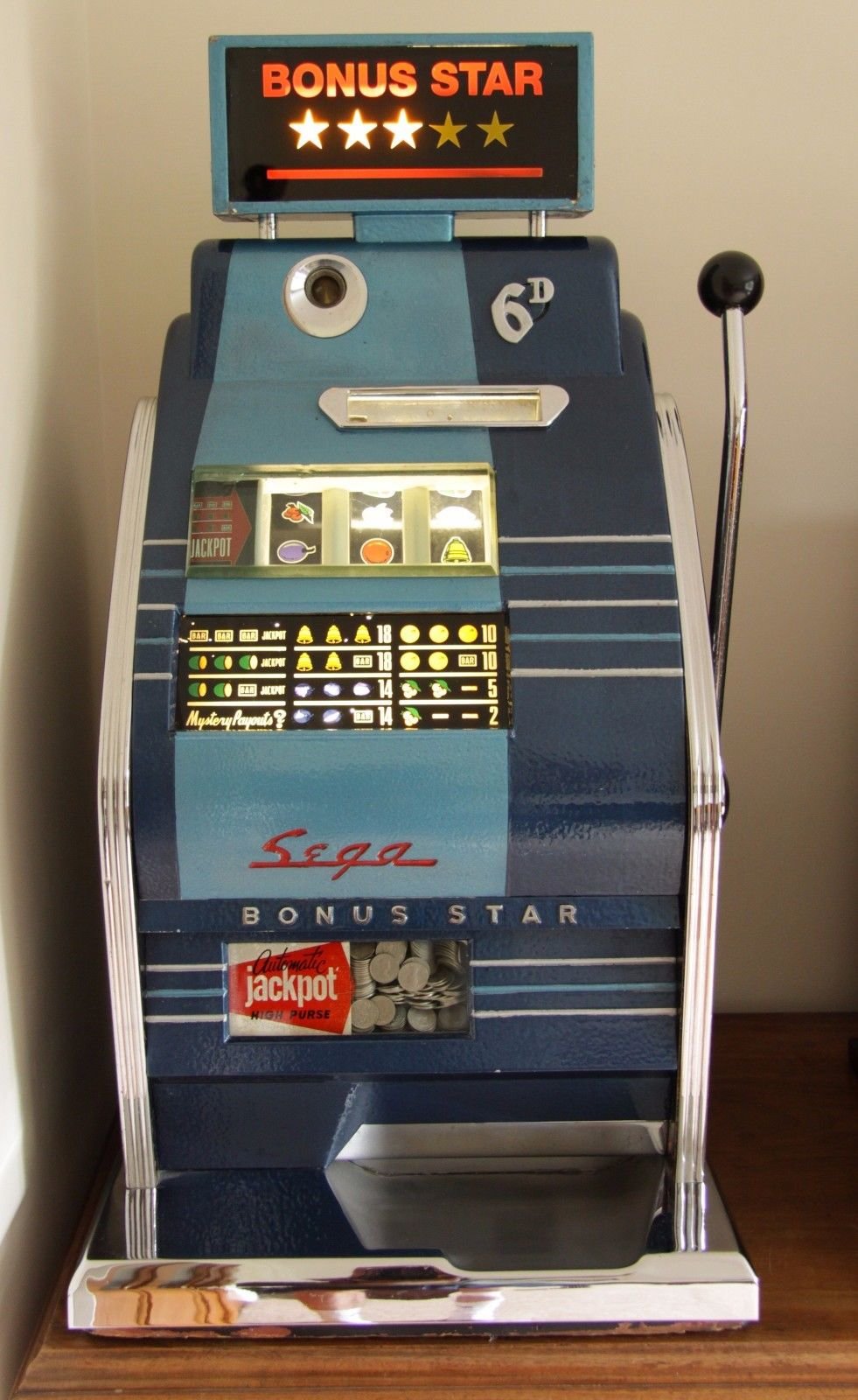
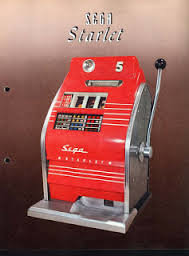
Bonus Star Starlet
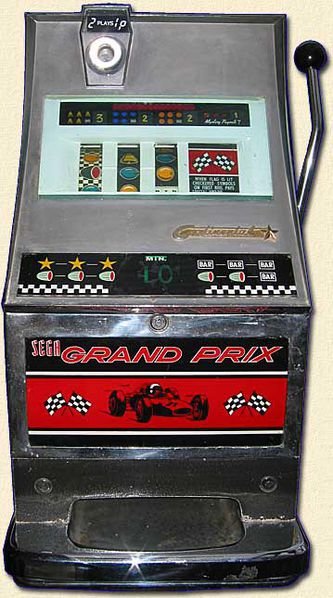
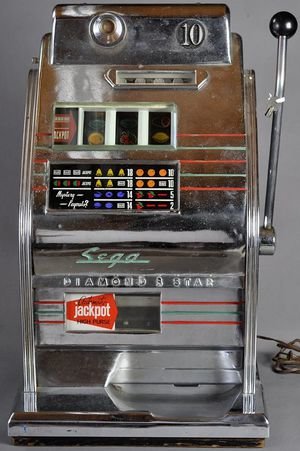
Continental Diamond Star
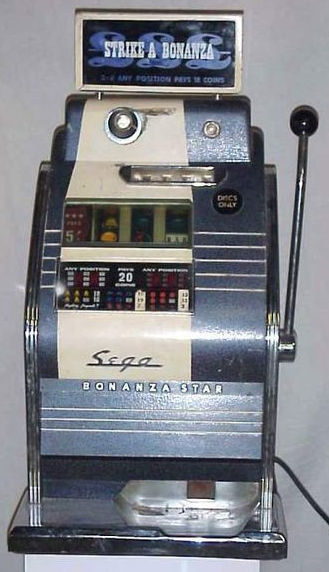
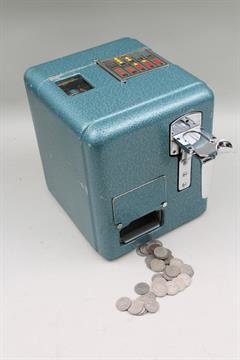
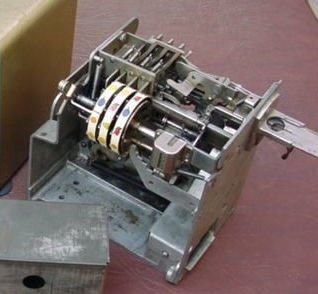
Bonanza Star Mini Sega
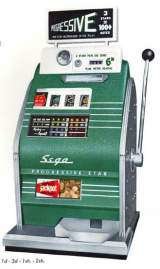
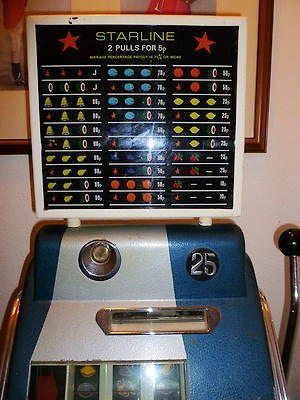
Progressive Star Bonaza Starline (30 payout)
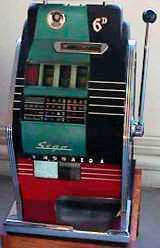

Monaco Star Multibell 35 Console
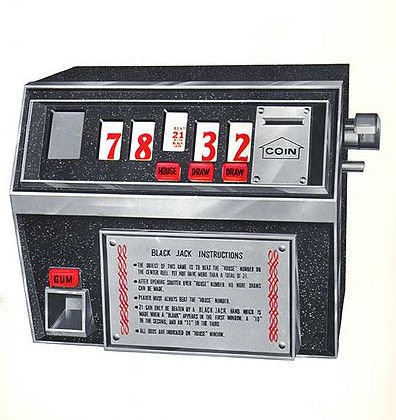
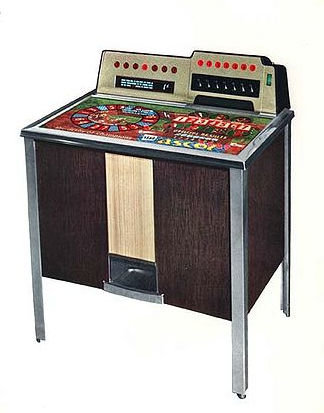
Blackjack Ascot
Arcade Cabinet Games
(perhaps more informative to view these through Flyers of the time)
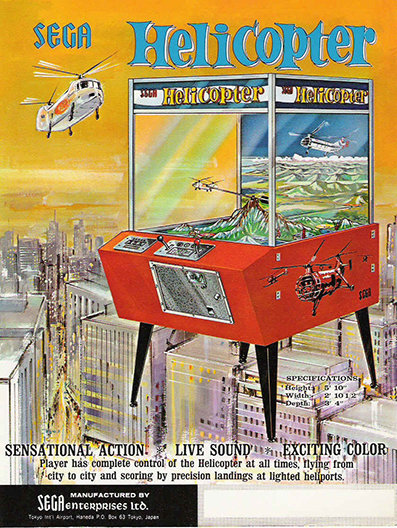
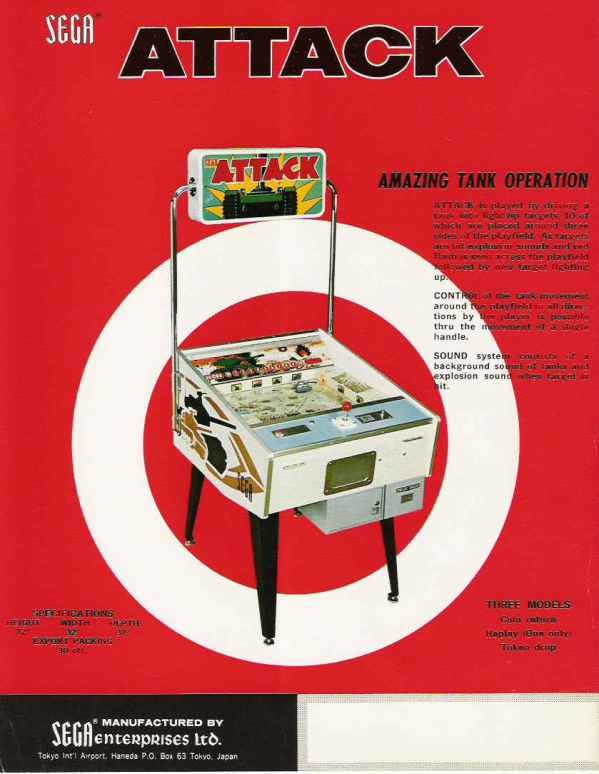
Super Helicopter 1968 Attack(tank battle)1973
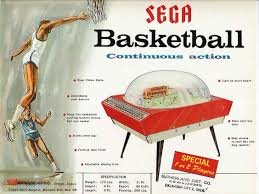
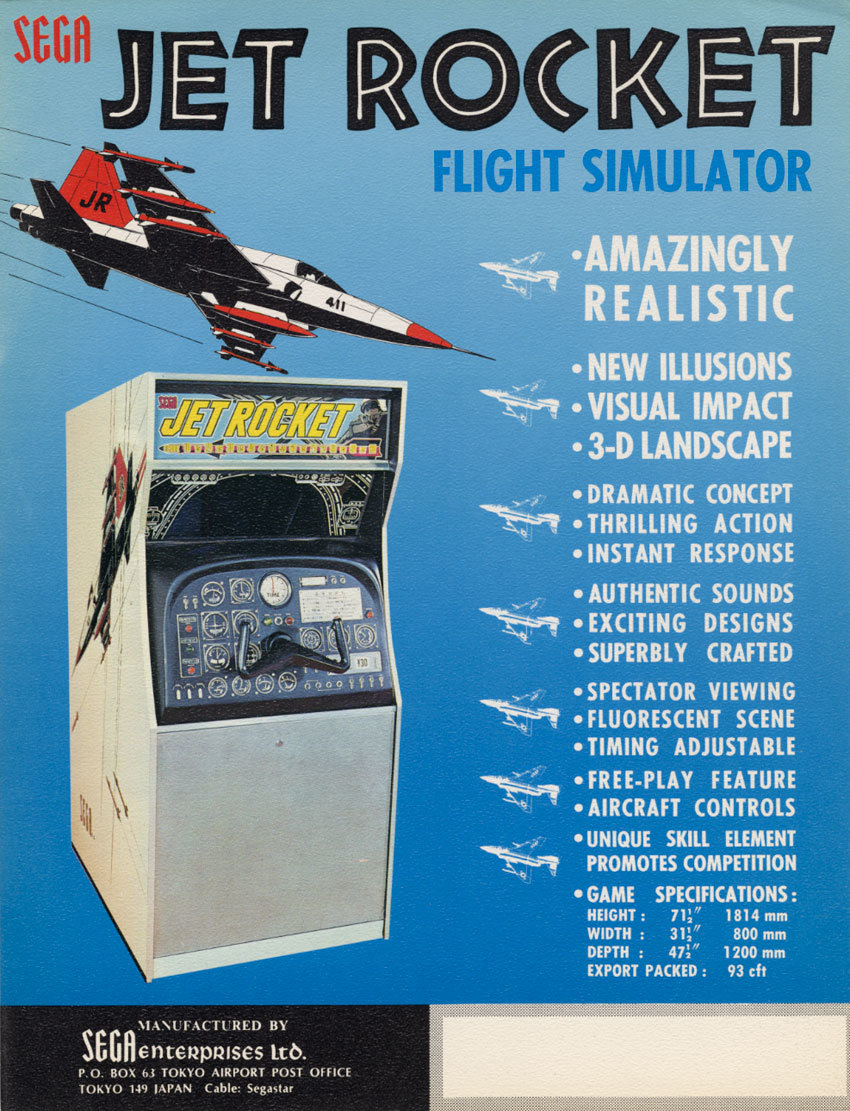
Basketball Jet Rocket
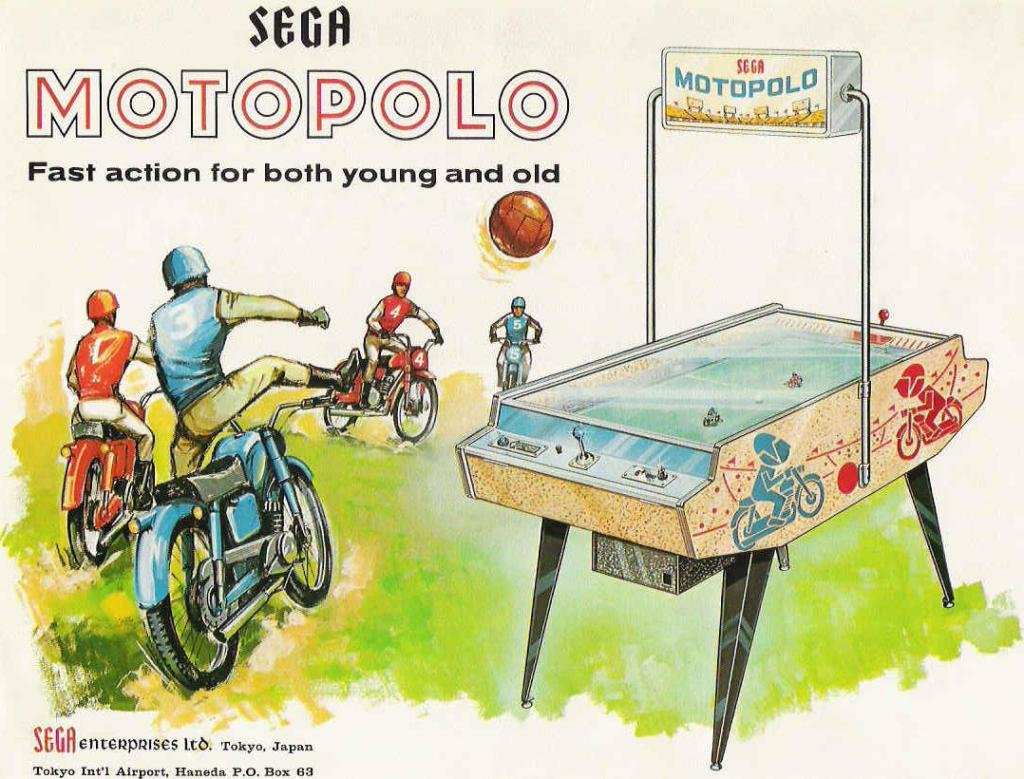
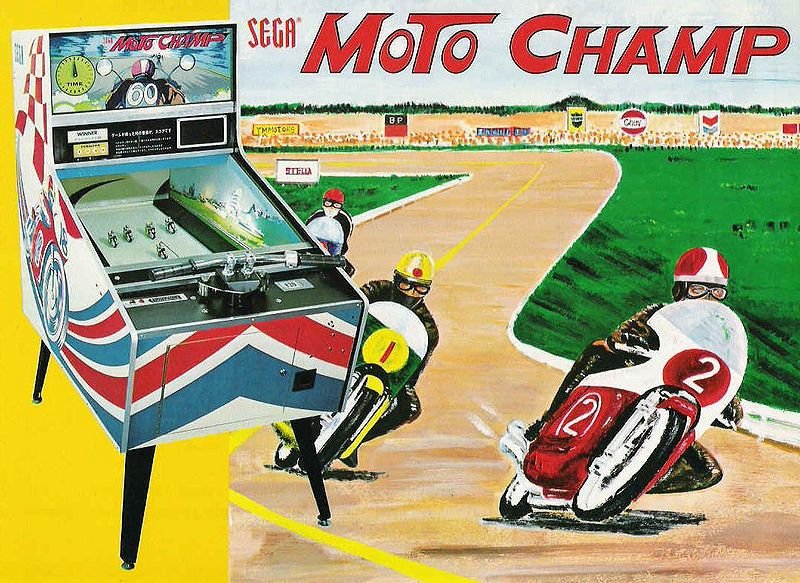
Motopolo Moto Champ
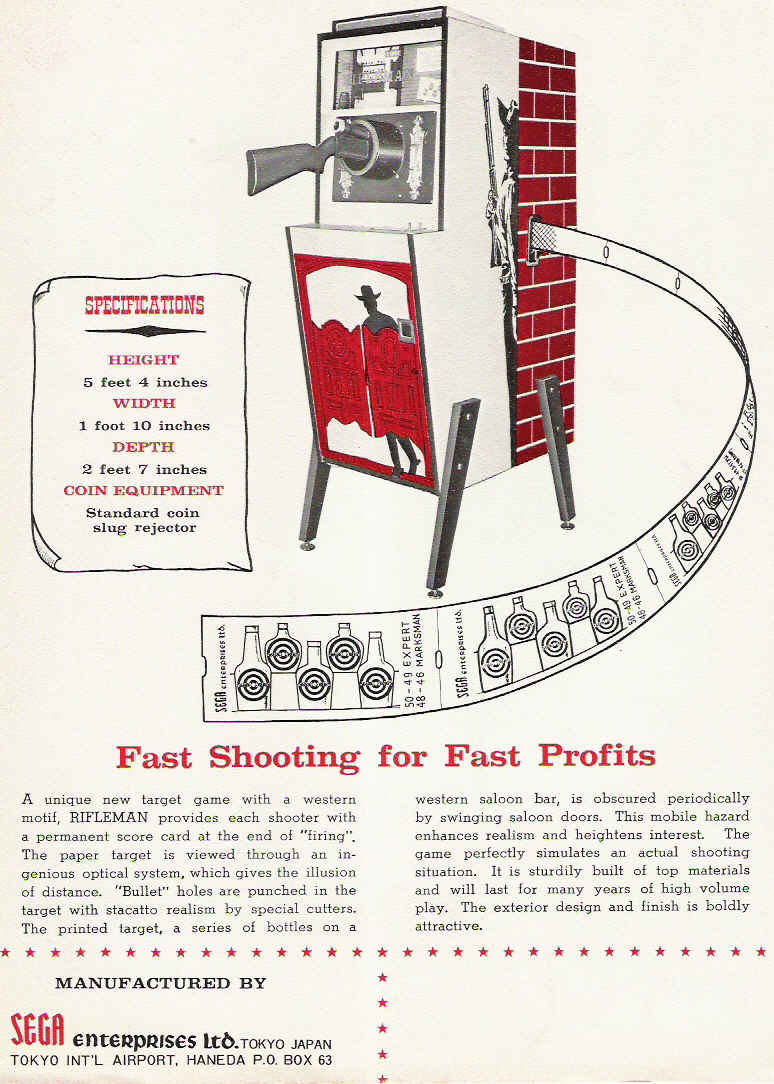
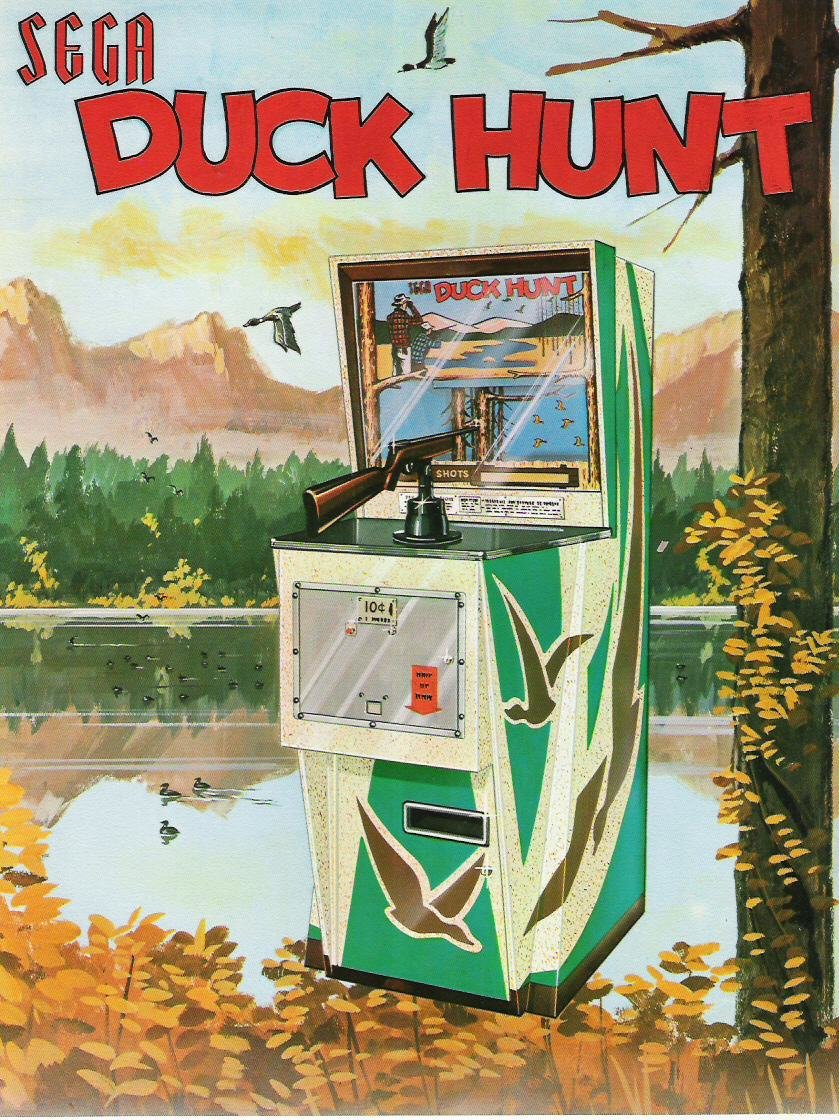
Rifleman(with target printout) Duck Hunt
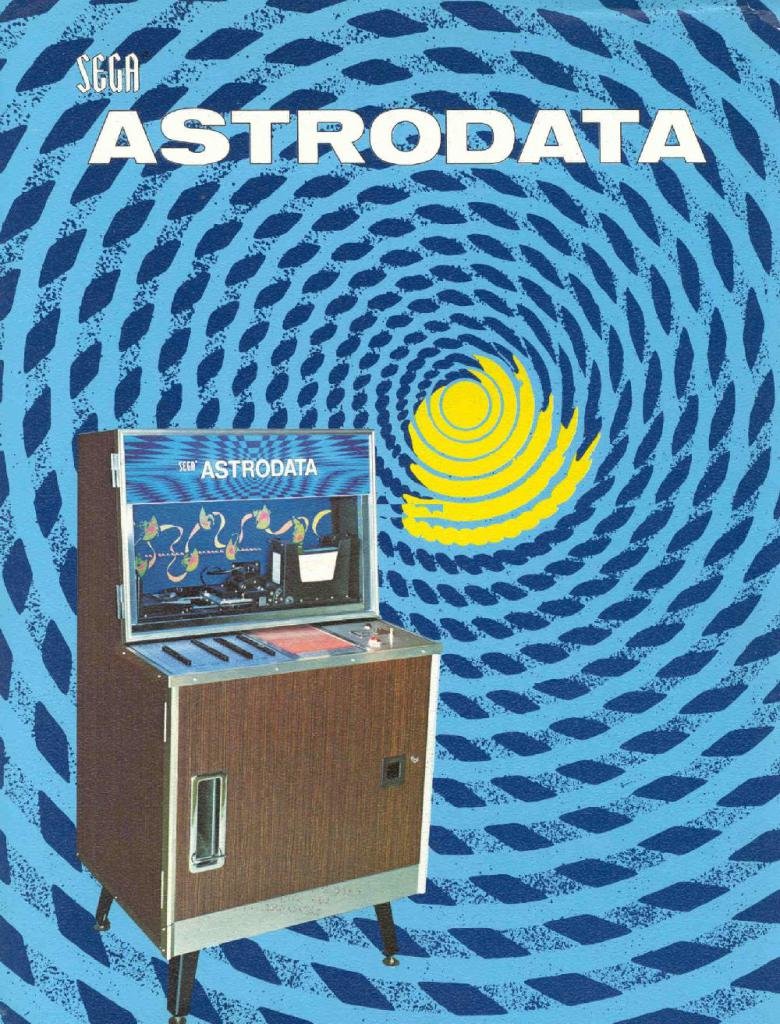
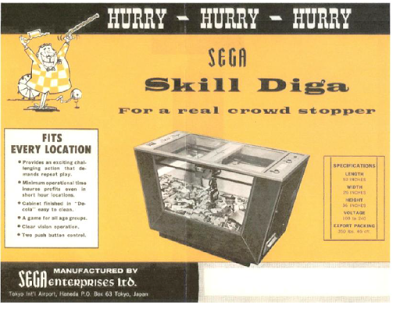
Astrodata fortune teller 1973 Skill Diga(mk1) 1966
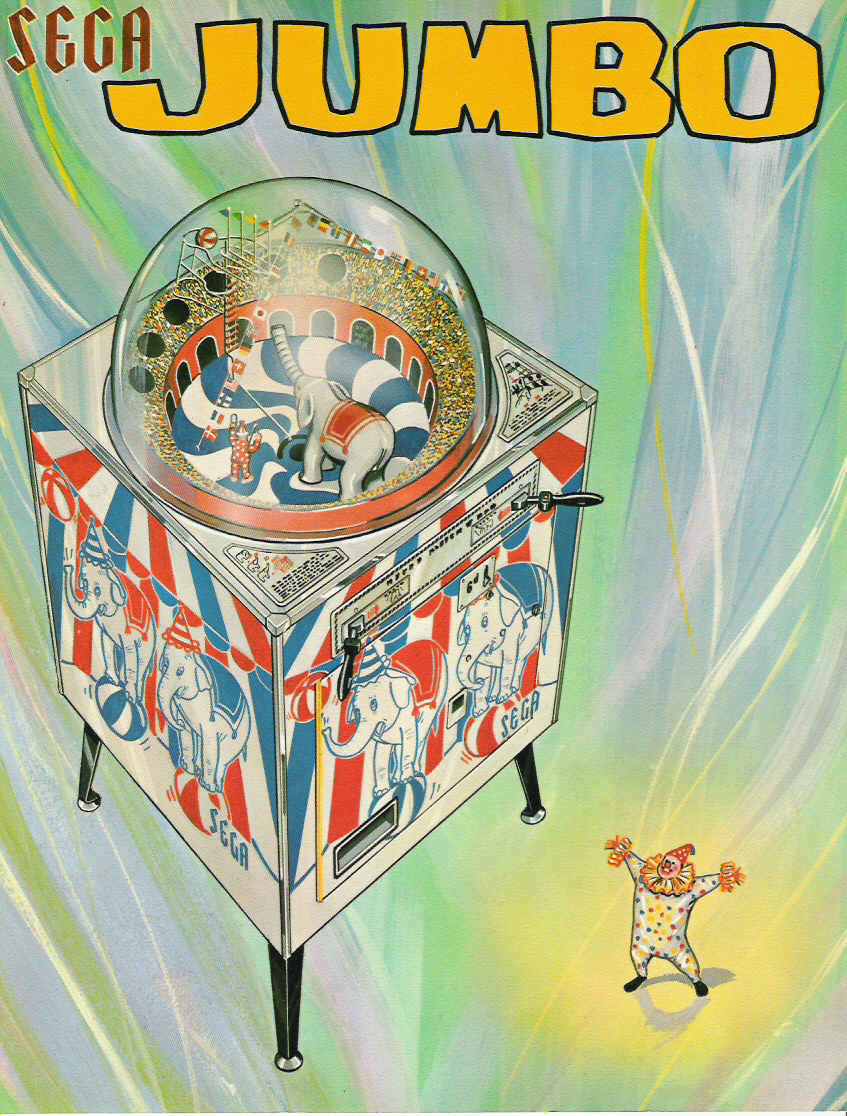
The Sega Jumbo(1973) has to be one of the cleverest and most addictive "win a prize" games ever made. Watch the video top left of the page to truly appreciate it
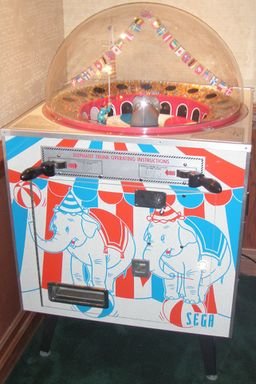
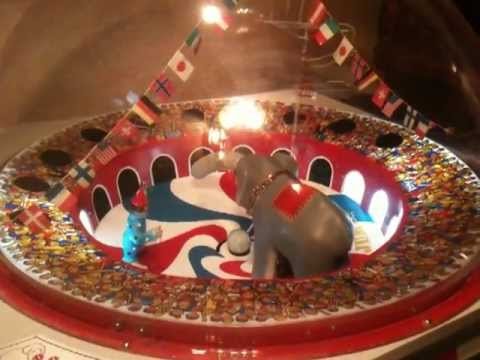
Sega Jumbo 1973
